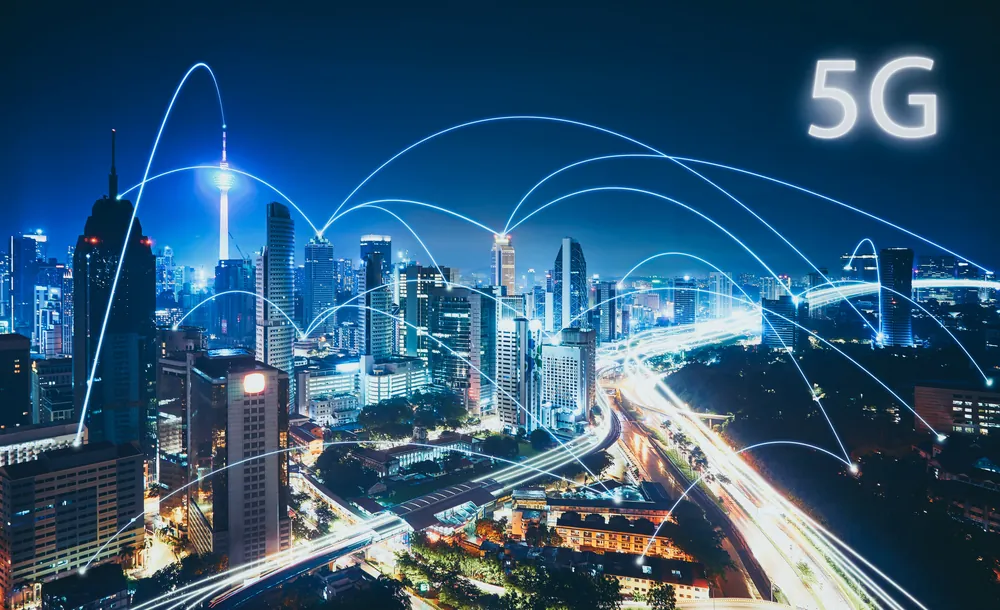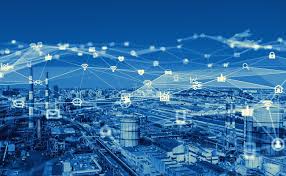Heard of 5G?
Discussions and implementation have surrounded 2G, 3G, 4G, and 5G technology for years. When most people hear any of the G’s, they automatically think of mobile or wireless cellular technology, not its usage in the logistics industry! Yet, In 2023, this technology is revolutionizing the freight industry with significantly faster data speeds, ultra-low latency, and enormous connectivity capabilities. These network download speeds are at the gigabit download level.
This technology is meant to serve a variety of tech applications such as the IoT (Internet of Things), AR (Augmented Reality), VR (Virtual Reality), and autonomous vehicles. It improves the mobile phone and general tech experience and is also used in applications as diverse as agriculture, healthcare, mission-critical communications, and smart grids. It has enormous potential to transform the freight industry from the inside out, promising greater accuracy, real-time data collection, improved warehouse processes, and more!

The Beginning
It is still being determined when this technology was first implemented within the logistics industry, but some reports show the U.S.’s signs of implementation for mobile devices began around early 2019. Around 2021, it was slowly being introduced to the world of logistics. 5G networks are available in over 70 countries, covering half of global markets and likely over ⅓ of the world’s population. It is estimated that by 2032, the global economic value will reach 13.2 trillion. It is the new standard, promising unrivaled data download/upload speeds, broader coverage than 4G, and more stable connectivity.
According to a supply chain statistic, over half of third-party logistics companies have invested 1-10% of their annual information technology budget in implementing it. It is also predicted that 60% of communication service providers will offer these services by 2024. Companies understand how game-changing these services can be, especially with today’s heightened consumer expectations and a more complex logistics landscape worldwide. This market has only accelerated recently, creating a vast potential to transform supply chains.
Path to Optimization
According to the International Telecommunications Union, 5G networks can deliver the following:
5x reduced end-to-end latency
100x higher user data rate
100x number of connected devices to 1 million per square kilometer
1,000x more mobile data per area
As previously stated, the modern supply chain has become increasingly complex, with fragmented channels, ever-changing product variations, instantaneous demand, and increased consumer expectations regarding delivery times and product availability. 4G helped to digitalize the supply chain industry, but did you know that 5G has revolutionized it? The stakes are higher than ever for supply chain success, and luckily, it has helped companies meet where they are, making it easier to adapt to the ever-competitive industry.
The advancement of technologies such as computing, machine learning, the Internet of Things (IoT), artificial intelligence, and robotics have all helped improve the efficiency of the supply chain; when coupled with 5G, these technologies can expedite the success of your supply chain! 5G improves the speed and reliability of these already advanced technologies.
Enormous amounts of data can be transferred in real time with 5G-based logistics. One of the top benefits is the unprecedented visibility it provides. Enhanced visibility makes planning much more accurate and efficient for companies, making it easier to respond to disruptions effectively.
5 Benefits of 5G
1. Connectivity
The benefits and potential for 5G within the supply chain seem endless! First, it has proven beneficial within every step of the supply chain. Starting in the warehouse, 5G can eliminate the challenges of connecting multiple wireless devices across an ample space. Technology from wireless cranes to forklifts and handheld devices can be connected rapidly while maintaining low power consumption. Over 100 devices can be supported by 5G at a speed of 10 gigabits per second; this is 100 times faster than 4G networks.
This level of speed allows companies to access real-time data that allows them to make better decisions and conduct better analyses to improve company performance. It allows for better connections among IoT devices and their networks. 5G is one of the most significant advances in the logistics industry.
These networks have an increased number of antennas that enable them to send and receive signals over long distances. The low level of precision required makes 5G useful in public safety and disaster relief scenarios when long-distance communication is required. Eventually, 5G will become vehicles’ primary communication method, creating a more efficient transportation system between 5G-enabled vehicles and roadside units. 5G lowers the time it takes to receive and send text messages, eliminating delays and enhancing traffic flow. 5G speeds also have an encryption mechanism that gives it enhanced security. These networks are immune to hacking attacks.
2. Location Tracking
Due to a general lack of security, some transportation routes have been considered dead zones, dissuading companies from using those routes for especially valuable cargo. These areas need a proper network, meaning logistics companies cannot track cargo in these zones. 5G solves this issue by creating a robust network that enables tracking. Geo-location technology allows companies to identify potential delays using specific routes.
5G allows companies to have clear and real-time route visibility, allowing them to adapt to delays and problem-solve more efficiently, saving them time and money. The benefits do not stop there; 5G prevents interruption in tracking when traveling through dense areas, which was previously an issue with lower networks like 4G. Overall, when regional connectivity is improved, logistics companies can better account for their cargo, increasing customer trust due to their enhanced reliability. These networks allow for better fleet and inventory management, as well as make it easier to send urgent or time-sensitive shipments.
3. Supply Chain Visibility
5G technology helps improve supply-chain visibility because it provides detailed data about inventory, orders, routes, and company operations. This technology can provide precise information about vehicle location at any given time. Accurate information can be transmitted instantly, providing real-time updates. This helps to prevent companies from running out of stock during an order rush or the holiday season.
In the modern landscape, data is the lifeblood of companies. Most have adopted data-driven approaches to making decisions to analyze performance and make predictions and or adjustments. Data procured by analytics, robots, IoT devices, and predictive maintenance systems allow for better customer service.
4. Precise Warehouse Management
5G allows for more precise inventory tracking and management. For example, “smart shelves” can be utilized using IoT sensors that provide real-time visibility. 5G makes it possible for IoT sensors to flag products that are running low and need to be reordered. This helps ensure continuous availability while also preventing overstocking.
5. Technological Advancements
If your company finds autonomous warehouse vehicles helpful, they can thank 5G advancements. Autonomous vehicles require communication between sensors, cameras, and other devices to relay instructions to the vehicle. 5G allows these vehicles to be safer and more reliable. Autonomous vehicles are only allowed in warehouse environments, but 5G technology may one day make it possible for these vehicles to be on the roads. 5G can also support the application of programs like VR (Virtual Reality) and AR (Augmented Reality) because of its higher bandwidth.
These programs help enhance the supply chain and make services like “vision picking” more accurate and productive. For companies to fully enjoy the benefits of today’s latest and most significant technological advancements, updating networks to 5G is essential to enjoy access to the full benefits of the new technology. Some of the most advanced technologies include the Internet of Things (IoT) and Enhanced Reality (AR/VR). The IoT helps create a more connected supply chain. The device data can detect abnormalities in the supply chain to avoid expensive delays or disruptions and improve efficiency and the customer experience from the real-time delivery status information.
Enhanced Reality allows logistics companies to showcase their products in specific contexts before purchasing. This tool makes it possible to change the items’ color or use animation with augmented Reality, which requires the high-speed networks of 5G. The excellent connectivity 5G provides helps create smooth animations.
The 5G Impact
As you have read, access to 5G networks makes an astronomical difference in the supply chain’s efficiency, success, and reliability. This technology makes managing inventory and operating fleets, tracking shipments, and overall supply-chain visibility possible. Using 5G will benefit logistics companies holistically and improve customer service and overall customer experience.



